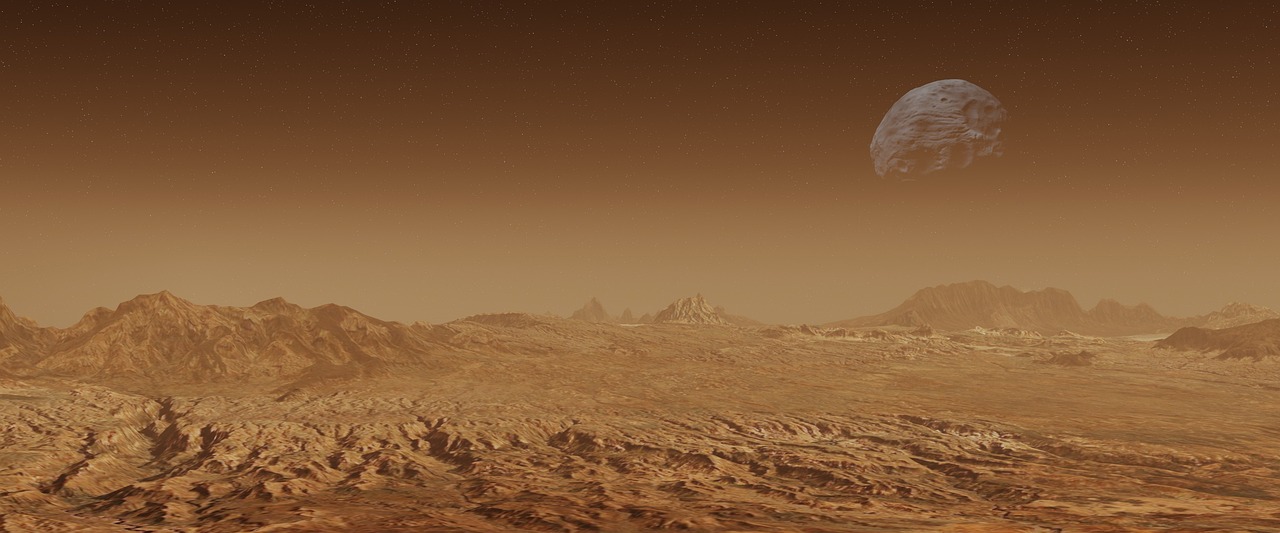Is There Life on Mars? A Groundbreaking Discovery of Water

For as long as humans have gazed at the stars, we’ve wondered: is there life beyond Earth? In the cosmic search for life, one of the most promising candidates has always been Mars, our neighboring planet. While no signs of life are currently visible, recent data from NASA’s Mars Insight Lander has revealed something extraordinary—an ocean’s worth of liquid water trapped deep beneath the Martian surface. Could this be the key to discovering life on Mars?
The Mars Insight Lander: A Mission Overview
The Mars Insight Lander (Interior Exploration using Seismic Investigations, Geodesy, and Heat Transport) was a stationary probe launched by NASA in May 2018. Designed to study Mars' interior structure, the mission lasted four years, concluding in December 2022 when dust accumulation on the solar panels stopped the lander's operations. Insight’s primary objective was to use a seismograph to collect data on Mars’ geological and seismic activity.
During its mission, Insight detected over 1,300 Marsquakes. Unlike Earth, where quakes result from shifting tectonic plates, Mars’ quakes occur due to the contraction and stretching of its single, massive plate. By studying the speed at which these quakes moved through the planet, scientists could analyze the rocks below the Martian surface, leading to an astonishing discovery—liquid water trapped 10 to 20 kilometers beneath the surface!
Water: The Key to Life
Water is essential for life as we know it. From sustaining ecosystems to forming the basis of human biology, water plays a crucial role in all living things. Michael Manga, a professor of earth and planetary science at the University of California, Berkeley, and a co-author of the study, emphasized its importance: “Water is the source of life. On Earth, deep mines and the ocean floor host life. While we haven’t found evidence of life on Mars yet, this discovery points to an environment that could potentially sustain life.”
While the Insight Lander is stationary and can only provide data from a specific location, if Mars' crust is consistent across the planet, the water trapped in the midsection of its crust could theoretically cover the entire Martian surface to a depth of 1 mile!
Tracing Mars’ Watery Past
Insight’s findings also align with earlier theories about Mars' history. Scientists have long believed that Mars once had oceans, lakes, and ponds. However, it was unclear where all that water went. The recent discovery suggests that much of the water seeped underground, now trapped within the planet’s crust, offering new insights into Mars’ ancient climate and the potential for life.
The Challenges of Accessing Mars’ Water
While the discovery of liquid water on Mars is groundbreaking, it also poses significant challenges. Digging 10 to 20 kilometers beneath the Martian surface would require immense resources, including expensive machinery, skilled personnel, and significant financial investment. Even on Earth, drilling just 1 kilometer beneath the surface is a difficult task.
Another mystery is why the water in Mars’ mid-crust hasn’t frozen, given the planet’s cold temperatures. This raises questions about the geological and thermal dynamics at play beneath the surface.
Conclusion: A Doorway to the Future
Though we are still far from tapping into Mars’ underground water reserves, this discovery marks a significant step toward understanding the planet’s past and its potential to harbor life. It serves as a reminder of humanity’s relentless curiosity and determination to push the boundaries of exploration. Who knows what secrets Mars might yet reveal?
Similar Post You May Like
-

CFCs, HFCs and their long, troubled history
At its peak, the ozone hole covered an area 7 times larger than the size of Europe, around 29.9 million km2, and was rapidly expanding
-

The Origin of Universe: Deciding point where it all began!
Let us unravel and surf through the ideas throughout ages to understand what the universe and its origin itself was to its inhabitants across history.
-

The Artemis Program
Inspired by the Greek goddess of the Moon, twin sister to Apollo, the artimis program was named on 14 May 2019 by Jim Bridenstine.






